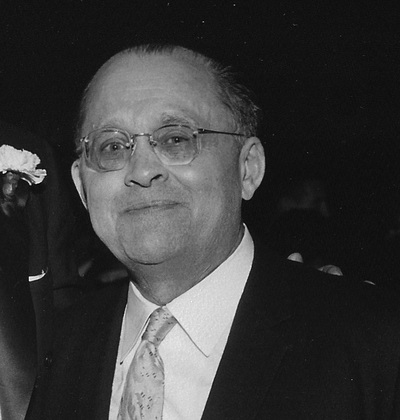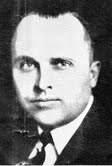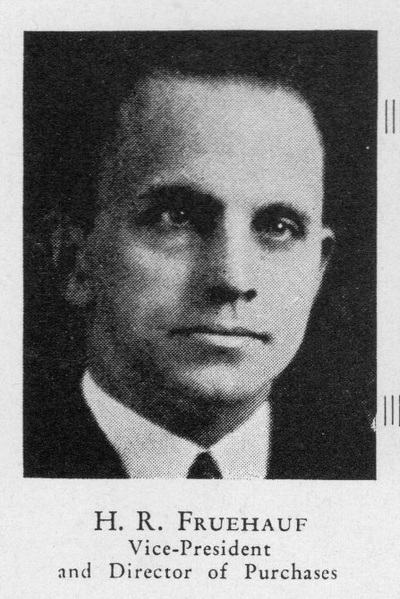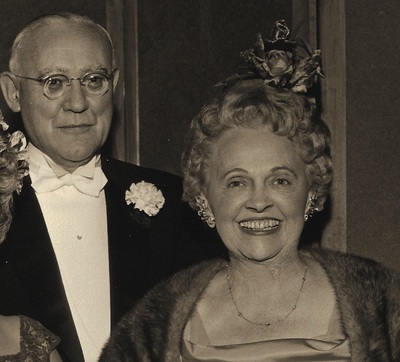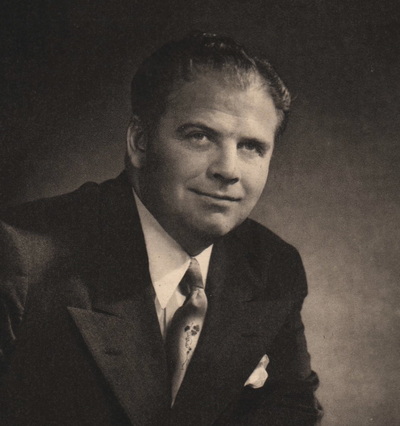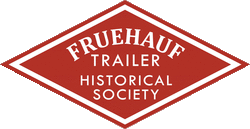The Founder of Fruehauf Trailer Company Corporation
August Charles Fruehauf - 1867-1930 & Louisa Schuchard Fruehauf- 1870-1926
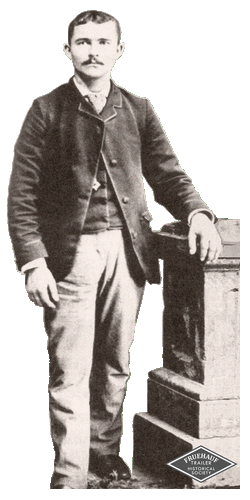
August Fruehauf
In 1882 a 14 year old Michigan farm boy, the American born son of German immigrants, went to seek his fortune in "the big city". The boy's name was August Charles Fruehauf. Fruehauf, which literally translated means "up early," proved a fitting surname for the boy who was destined to become the pioneer of American freight transportation.
In 1903 August moved to Detroit and opened his own blacksmith shop in a converted feed store. In 1911 August's reputation as a horseshoer and carriage builder was well established. When August opened this new shop he brought along a husky youngster, Otto Neumann had joined the Fruehauf blacksmith team the year before. It was a wise decision. Otto's ability to design, create, supervise and sell during Fruehauf's early business days was to prove highly instrumental in the later success of the company as a semi-trailer manufacturing firm.
In mid-1914, Frederic M. Sibley, Sr., a Detroit lumber manufacturer, came to see August about a problem. It was a fateful visit for it changed the company's destiny, carrying it far beyond the horse and into the motor age. He had a fine boat he wanted to get to his summer place on a lake in Upper Michigan, but a horse and wagon would take days and days. Piece by piece August and Otto beat out and bolted together a sturdy two-wheeler that hooked to the rear of Mr. Sibley's Model-T frame with a pole acting both as a tongue and brake. They called it a semi-trailer. The semi-trailer got the boat to Sibley's lake. And Mr. Sibley, impressed by its performance, decided that such a rig with a platform would be most efficient for running about his lumber yard. So August built Mr. Sibley a stronger semi-trailer with a platform. It worked just as Mr. Sibley thought it would. The practical and economic advantages of Fruehauf's maxim, "A horse can pull more than it can carry … so can a truck", caught on slowly and took hold initially with other lumber dealers in Detroit. To capitalize on this audience, the first Fruehauf trailer advertisement appeared in a national lumber journal in April 1916. Soon other major trade publications, vocational magazines, and newspapers were carrying the Fruehauf message.
On February 27, 1918, the Fruehauf Trailer Company was incorporated and a year later, with the nation in a postwar business boom, Fruehauf sales zoomed to a whopping $302,000.
In 1903 August moved to Detroit and opened his own blacksmith shop in a converted feed store. In 1911 August's reputation as a horseshoer and carriage builder was well established. When August opened this new shop he brought along a husky youngster, Otto Neumann had joined the Fruehauf blacksmith team the year before. It was a wise decision. Otto's ability to design, create, supervise and sell during Fruehauf's early business days was to prove highly instrumental in the later success of the company as a semi-trailer manufacturing firm.
In mid-1914, Frederic M. Sibley, Sr., a Detroit lumber manufacturer, came to see August about a problem. It was a fateful visit for it changed the company's destiny, carrying it far beyond the horse and into the motor age. He had a fine boat he wanted to get to his summer place on a lake in Upper Michigan, but a horse and wagon would take days and days. Piece by piece August and Otto beat out and bolted together a sturdy two-wheeler that hooked to the rear of Mr. Sibley's Model-T frame with a pole acting both as a tongue and brake. They called it a semi-trailer. The semi-trailer got the boat to Sibley's lake. And Mr. Sibley, impressed by its performance, decided that such a rig with a platform would be most efficient for running about his lumber yard. So August built Mr. Sibley a stronger semi-trailer with a platform. It worked just as Mr. Sibley thought it would. The practical and economic advantages of Fruehauf's maxim, "A horse can pull more than it can carry … so can a truck", caught on slowly and took hold initially with other lumber dealers in Detroit. To capitalize on this audience, the first Fruehauf trailer advertisement appeared in a national lumber journal in April 1916. Soon other major trade publications, vocational magazines, and newspapers were carrying the Fruehauf message.
On February 27, 1918, the Fruehauf Trailer Company was incorporated and a year later, with the nation in a postwar business boom, Fruehauf sales zoomed to a whopping $302,000.
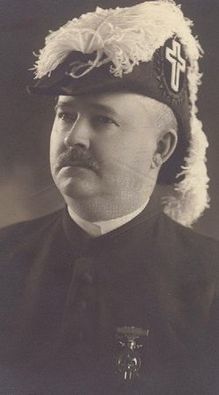 August Fruehauf in Knight's Templar Uniform
August Fruehauf in Knight's Templar Uniform
August Fruehauf was a member of the Free Mason Society, Knight's Templar. The Roman Catholic Church has historically opposed Freemasonry since it began to emerge, under the belief the group is a "Secret Society" and has a deeply hidden agenda that opposes the church and its beliefs. Members of the Church found to be Freemasons were in the early 20th Century, commonly excommunicated. This has often lead to the misguided belief that the Church somehow also opposed the Knights Templar, however the Church makes distinction between the Templars, a public monastic order, and "Secret Societies".
Roy Fruehauf and his siblings were raised in the Christian Science church because of the faith of their mother Louisa, who embraced this philosophy. Louisa became stricken with illness and was not expected to live. The family gathered at her bedside expecting the worst. A neighbor heard of the dire situation and had recently been introduced to the teachings of Mary Baker Eddy of the Christian Science religion. She visited Louisa to read these aloud and miraculously Louisa recovered her health. August's membership in the Knight's Templar and this conflict with the Catholic church may have influenced this switch to a more modern religion at the time.
Roy Fruehauf and his siblings were raised in the Christian Science church because of the faith of their mother Louisa, who embraced this philosophy. Louisa became stricken with illness and was not expected to live. The family gathered at her bedside expecting the worst. A neighbor heard of the dire situation and had recently been introduced to the teachings of Mary Baker Eddy of the Christian Science religion. She visited Louisa to read these aloud and miraculously Louisa recovered her health. August's membership in the Knight's Templar and this conflict with the Catholic church may have influenced this switch to a more modern religion at the time.
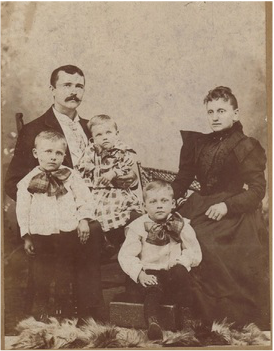 Louisa and August and their young children
Louisa and August and their young children
Louisa Henrietta Schuchard made her contribution to the family business while raising five children. A key figure in August's business, she had learned accounting, inventory and purchasing by managing her father's general store as a young girl. The youngest of 13 siblings, Louisa had a can-do attitude which she brought to their marriage. Suffering through at least three devastating fires in which the young couple lost everything, including a much beloved horse, Louisa soldiered on assisting her husband with all aspects of his business.
Louisa occupied an important place on the company board, once they incorporated in 1918 and she was in charge of painting the trailers the beautiful shade of yellow gold that became their hallmark. (See a restored trailer here) Roy Fruehauf remembers a familiar site seeing his mother at the Gratiot Avenue station, negotiating with vendors, a wagon wheel propped against her hip and a pile of horse shoes at her feet.
Louisa occupied an important place on the company board, once they incorporated in 1918 and she was in charge of painting the trailers the beautiful shade of yellow gold that became their hallmark. (See a restored trailer here) Roy Fruehauf remembers a familiar site seeing his mother at the Gratiot Avenue station, negotiating with vendors, a wagon wheel propped against her hip and a pile of horse shoes at her feet.

